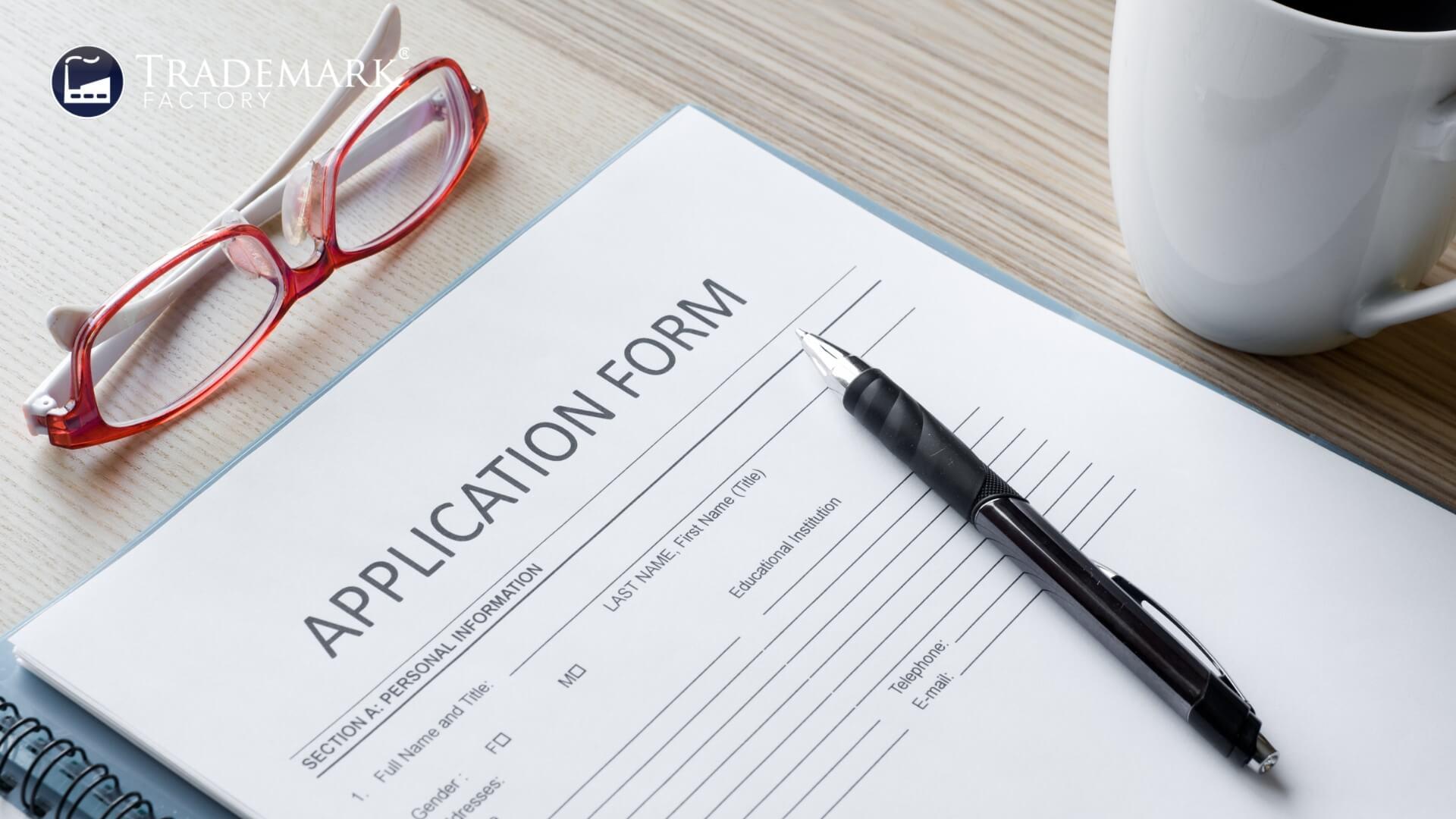Mastering The Art Of Filing A Trademark Application With Examples

Navigating the complex landscape of trademark applications methods can be a daunting endeavor. This strenuous process requires a precise understanding of legal intricacies and procedural nuances that often leave applicants feeling overwhelmed and confused. The aim of this article is to demystify the art of filing a trademark application, offering comprehensive guidance to those seeking to protect intellectual property rights. Leveraging detailed examples, it elucidates various methods for application while focusing on key strategies designed to maximize success rates. Readers will gain mastery over critical aspects such as timing, proper categorization, search tactics, and thorough preparation of documentation. With an academic approach that emphasizes objectivity and precision, this article offers invaluable insights into the world of trademarks. It seeks not only to educate but also foster a sense of belonging among individuals striving towards securing their creative inventions or brand identities via successful trademark registration.
The Basics of Filing a Trademark Application

Filing a trademark application necessitates a comprehensive understanding of the process, particularly the significance of conducting thorough trademark research and comprehending trademark categories. Trademark research is paramount in ensuring that no existing trademarks could conflict with or invalidate the proposed one, thereby protecting business interests and preventing legal complications. Furthermore, an astute awareness of different trademark categories enables applicants to correctly classify their goods or services, which directly influences the scope of protection afforded by their potential trademark.
The Importance of Trademark Research
Understanding the critical importance of trademark research is essential in ensuring that your brand's unique identity remains protected and free from potential legal conflicts. This process involves:
1. Identifying potential trademark pitfalls.
2. Anticipating possible trademark conflicts.
3. Developing effective branding strategies.
4. Avoiding infringement issues and trademark violations.
This knowledge forms a solid foundation for a successful application, leading us smoothly into understanding different categories of trademarks to further expand our comprehension.
Understanding Trademark Categories
Comprehending the nuances of various trademark categories is a critical step in ensuring appropriate brand protection and legal compliance. Recognizing whether your trademark falls under product, service, collective, certification or trade dress guarantees optimal logo protection. Correct category selection minimizes chances of trademark infringements and facilitates seamless trademark renewals. Trademark benefits are maximized when understanding these distinctions, readying one for the subsequent exploration of application methods.
Sub-Category: Application Methods

Exploring the various methods of trademark application yields a range of options, each with distinct advantages and challenges. This includes online filing, which offers convenience and speed; paper filing, generally considered more time-consuming but preferred in certain circumstances; international trademark filing for those seeking protection beyond domestic borders; use of a trademark attorney to ensure legal compliance and expert guidance; and understanding different trademark application forms relevant to specific situations. Each method requires careful consideration due to varying complexities involved, thus making it pivotal to understand their implications thoroughly before deciding on the most suitable approach.
Online Filing
Navigating the online process for trademark application filing can be a streamlined and efficient journey with the right guidance. Digital platforms ensure security measures are in place, providing a thorough cost analysis and time efficiency. The added benefit of application tracking allows prompt progress updates. Having explored the benefits of online trademark filing, it is crucial to understand alternative methods such as paper filing for comprehensive knowledge on trademark applications.
Paper Filing
Despite the increasing shift towards digital platforms, paper filing of trademark applications remains a viable option for certain businesses due to its unique characteristics and advantages. Attention to document organization, meticulous record keeping, and avoiding paperwork mistakes are critical in this process. Comprehending filing systems and signature requirements is essential. This understanding eases the transition into international trademark filing, broadening the scope of business operations.
International Trademark Filing
Securing international protection for one's intellectual property is an increasingly crucial step in the globalized business landscape, with the Madrid System offering a streamlined path towards this goal. International trademark filing raises several issues:
- Global registration challenges
- Foreign language considerations
- Cultural sensitivity in branding
- International infringement issues
- Cross border trademark enforcement
Mastering these complexities necessitates professional guidance, leading to our next topic: employing a proficient trademark attorney.
Using a Trademark Attorney
Moving from international considerations, it's pivotal to explore the role of a trademark attorney. Optimal attorney selection is crucial in navigating legal fees, confidentiality agreements, and potential trademark disputes. Maintaining a healthy attorney-client relationship ensures smooth application process, avoiding pitfalls along the way. With their expert advice, your pursuit of securing a trademark becomes less daunting. Now we turn our focus to understanding 'trademark application forms', which is essential for successful registration.
Trademark Application Forms
Understanding the complexities and requirements of various forms involved in the trademark registration process is a critical step that demands precision and meticulous attention to detail. Mastering this art involves: 1) Comprehending form complexity, 2) Deciphering legal jargon, and 3) Fulfilling documentation requirements. However, due caution should be exercised to avoid application errors and cope with form revisions. This leads directly into understanding timely adherence to filing deadlines.
Application Filing Deadlines
Adherence to prescribed trademark application filing deadlines during the registration process is of utmost importance, as any delay or missed deadline could result in the abandonment of your claim.
Deadline Extensions
Expedited Processing
Mitigate consequences of late filing penalties
Quicker application resubmission
Missed deadlines may incur penalties, but extensions and expedited processes exist to keep you on track. The subsequent section will delve into priority claims--another important facet of trademark applications.
Priority Claims
Delving into the realm of priority claims in trademark applications, it becomes crucial to comprehend their significance in the context of intellectual property registrations. Claiming priority can decisively influence application outcomes. Priority documentation and effective dates, governed by Paris Convention's priority provisions, define one's eligibility for these claims. Understanding this intricate process aids in establishing a firm foothold within the trademark landscape. This awareness seamlessly leads to mastering multiclass applications complexities.
MultiClass Applications
Navigating the complexities of multiclass trademark applications can significantly enhance the scope and protection of your intellectual property rights. Trademark benefits, such as broadened protection against infringement, are amplified when multiple classes are involved. However, potential application pitfalls may include increased registration costs. Understanding these aspects is crucial to making informed decisions about your trademark strategy. The exploration continues with a focus on 'statement of use and intent to use'.
Statement of Use and Intent to Use
Transitioning from MultiClass applications, the focus shifts to the Statement of Use and Intent to Use in trademark application. These are pivotal for asserting ownership declaration and demonstrating usage proof, two key aspects for obtaining trademark benefits. Despite their legal implications, common errors occur frequently leading to trademark rejection. Mitigating such risks requires careful drafting. Next we'll explore amendments that can be made to a filed trademark application to address such issues.
Trademark Application Amendments
Corrections to a filed request, known officially as trademark application amendments, can be critical in rectifying errors and enhancing the chance of successful registration. It's necessary to understand amendment implications and strategies for revising applications.
Amendment Strategies
Rejection Reasons
Successful Amendments
Precise language use
Incorrect classification
Thorough review
Timely submission
Incomplete information
Clear representation
Understanding legal requirements
Similar existing marks
Legal compliance
The mastery of this process can significantly boost the probability of securing one's unique brand identity in the marketplace.
Mastering the Art of Trademark Application

Mastering the art of trademark application requires a thorough understanding of relevant laws and meticulous attention to detail. Comprehending trademark costs, preparing for potential trademark objections, and understanding the process of trademark renewals are integral aspects. A firm grasp on intellectual property rights aids in avoiding instances of trademark infringement, thereby fostering a sense of belonging within the entrepreneurial community.
Frequently Asked Questions

What are the potential legal consequences of not filing a trademark application correctly?
Incorrectly filing a trademark application could result in legal repercussions, including infringement issues and trademark disputes. Application errors may lead to the dilution of the trademark, potentially increasing vulnerability to competitive encroachment.
How long does it typically take for a trademark application to be processed and approved?
The application timeline for trademark processing typically spans 6 to 16 months. Approval duration can vary based on delay reasons such as office actions or oppositions. Expedited approval is not typically available.
Are there any specific industries or businesses that benefit more from filing a trademark application?
Trademark benefits are universal; however, industries with unique products or services may gain greater advantages. Trademark strategies, focusing on trademark priorities and industry specific trademarks, enhance brand protection and market position significantly.
Can I apply for a trademark if my business is not yet fully established?
Trademark prerequisites do not require full business establishment; application timing is flexible. Early trademark benefits include securing intellectual property rights and enhancing startup branding before market introduction.
Can a trademark application be rejected and if so, what are the common reasons for rejection?
Yes, a trademark application can be rejected. Common reasons include similarity to existing trademarks and descriptive or generic terms. Trademark Basics and Rejection Insights guide in overcoming denials due to such Application Mistakes and Trademark Objections.
Conclusion

In conclusion, understanding the basics of filing a trademark application and mastering its artistry is critical for safeguarding one's brand identity. This process requires meticulous attention to detail, legal knowledge, and strategic considerations. Success in this endeavor ensures robust intellectual property protection that can significantly contribute to corporate growth and competitiveness. Continued exploration of illustrative examples further enhances comprehension and proficiency in this crucial business arena.
Subscribe to Trademark Wednesdays, our weekly newsletter where we'll send fun and informative trademarking topics straight to your inbox.




